Barking Up the Right Tree (Part 1)
By Skye Haggerty, Former Indigenous Student Museum Intern
Originally published July 2019
For many Indigenous Peoples, the availability of birch and spruce trees made their bark and roots essential materials for the creation of every-day items such as baskets. Not only is this material extremely practical, it also provides a unique medium to showcase artistic talent.
Some of my favourite memories involve going into the bush with my grandmother to collect the papery birch bark for her crafts. In the winter, I’d get to chew on spruce gum while she collected roots from the muskeg in our backyard. Sometimes these trips came with tea and cold bologna sandwiches, sometimes not, but they always included a teaching or two about Grandmother Tree and her gifts to us.
In this two-part blog post, I’ll explore the importance of these materials, the process of harvesting them, and a few of the traditional crafts my grandmother taught me to make from them.
Barking Up the Right Tree
Although there are many plants and trees available to the people of Turtle Island (North America) for basketry, the popularity of waskway (birch) as a material is a result of both the tree’s availability (it grows throughout northern boreal regions) and its unique qualities. In advance of my demonstration at the RAM National Indigenous People’s Day celebration, I recently set out with my grandmother to harvest materials to create my own basket.
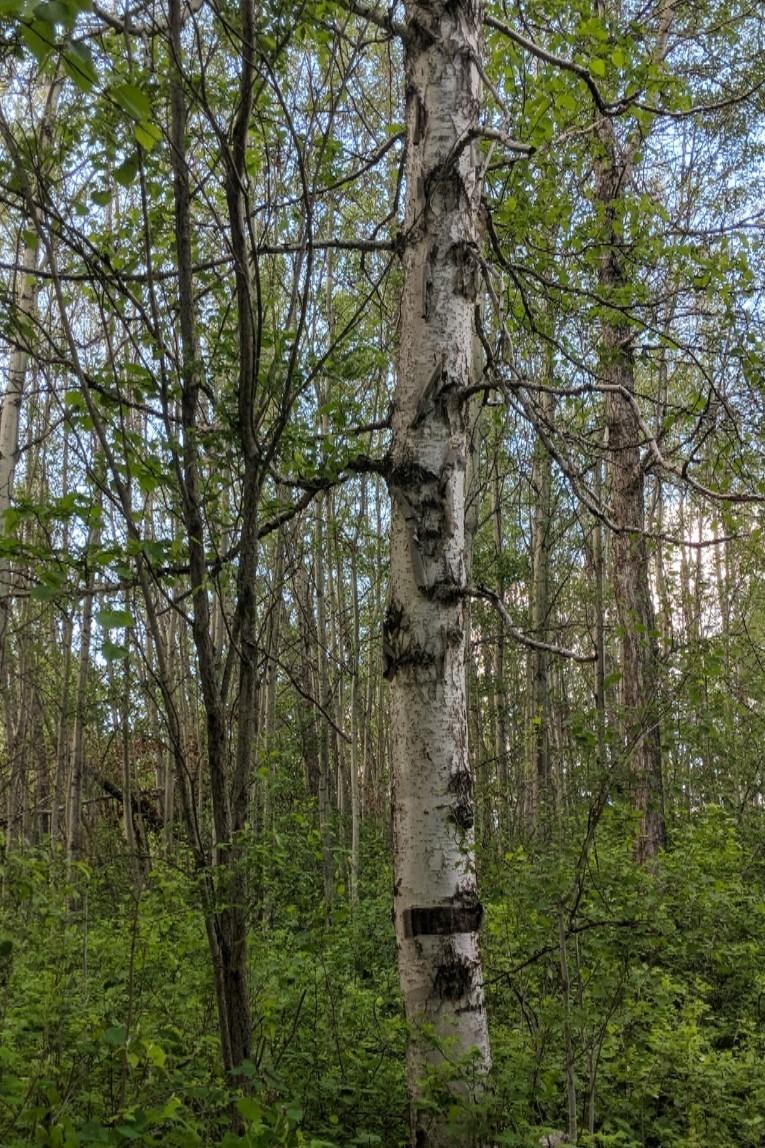
The papery, flexible bark is easy to peel and harvest in the spring, May through June, and is perfect for cutting patterns. It keeps its flexibility longer than other natural materials used for traditional basketry such as nîpisîy (willow) and wîhkwaskwa (sweetgrass) with proper storage.
Birch bark is harvested in the spring months when the sap is running and the bark is at its thickest after the winter. These combined factors help the bark curl away from the tree easier and ensure that the tree will recover.
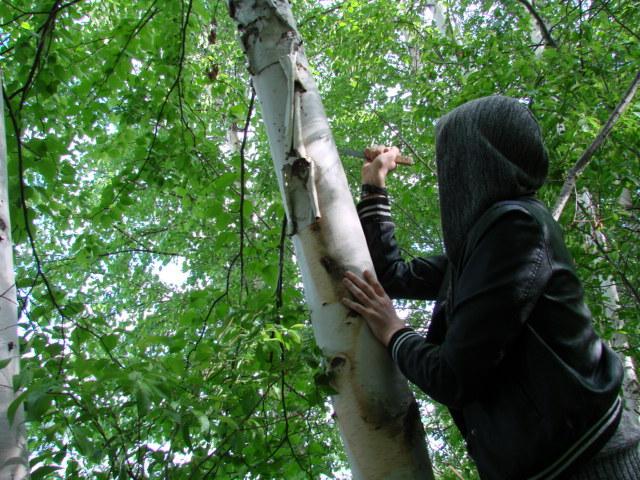
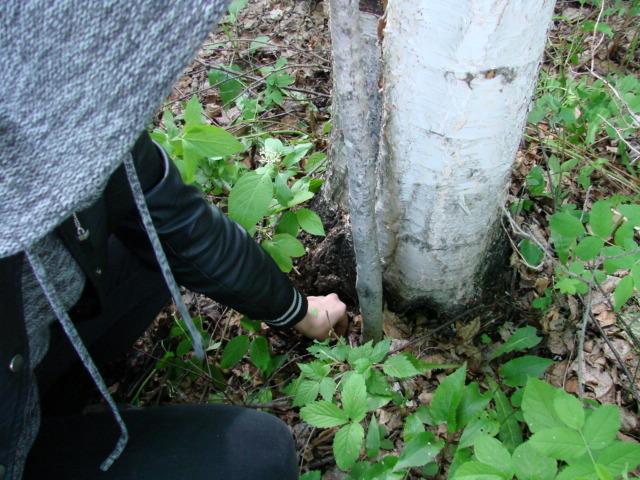
Here I am ready to harvest birch bark. First, we must give an offering to the birch tree for what we are about to take. Once that is done, we get straight to work with surprisingly few tools—just a good pen knife and a strong, steady arm!
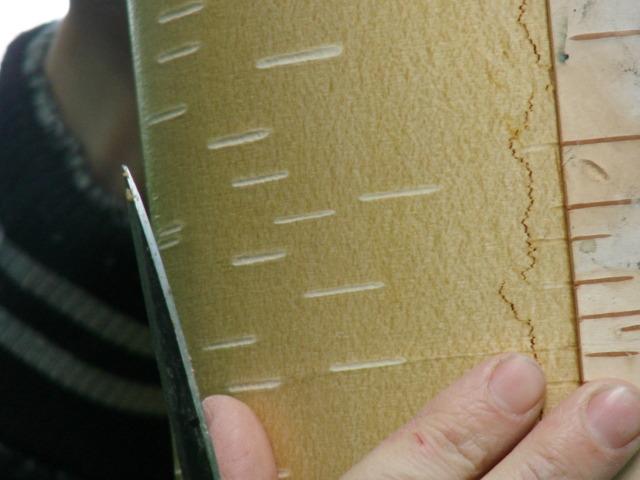
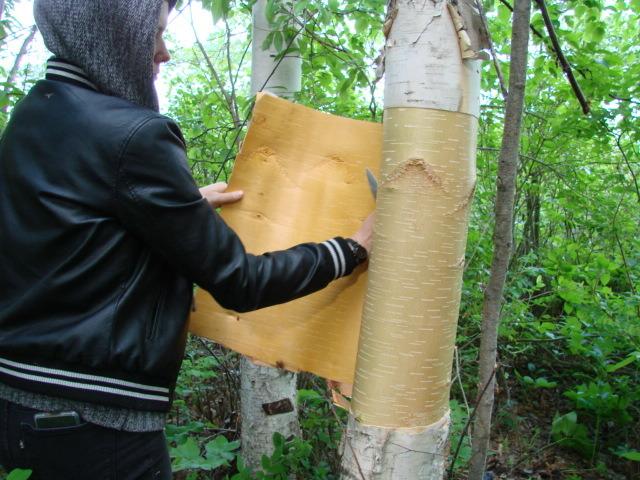
After identifying an area of bark with little to no bumps and interruptions, a single straight cut down the side of the tree is sufficient to start the peeling. You do not want to cut too deep and strip the darker “cork” layer which allows the tree to continue circulating sap. If you peel this layer, you not only harm the tree but risk killing it. My grandmother taught me to respect the tree and this involves being a responsible harvester that looks out for its wellbeing.
Once peeled, the bark can be stored in a cool, damp environment until ready for use. It is best used within a few days, as the bark will continue to dry out and curl up.
Another traditional component for piecing the whole basket together is spruce root. Unlike synthetic sinew, once spruce root dries it keeps its shape and reinforces the basket without becoming fragile. As well, the gum of the spruce can be chewed like gum, often by children, while parents or grandparents are busy pulling the tough root from the ground.
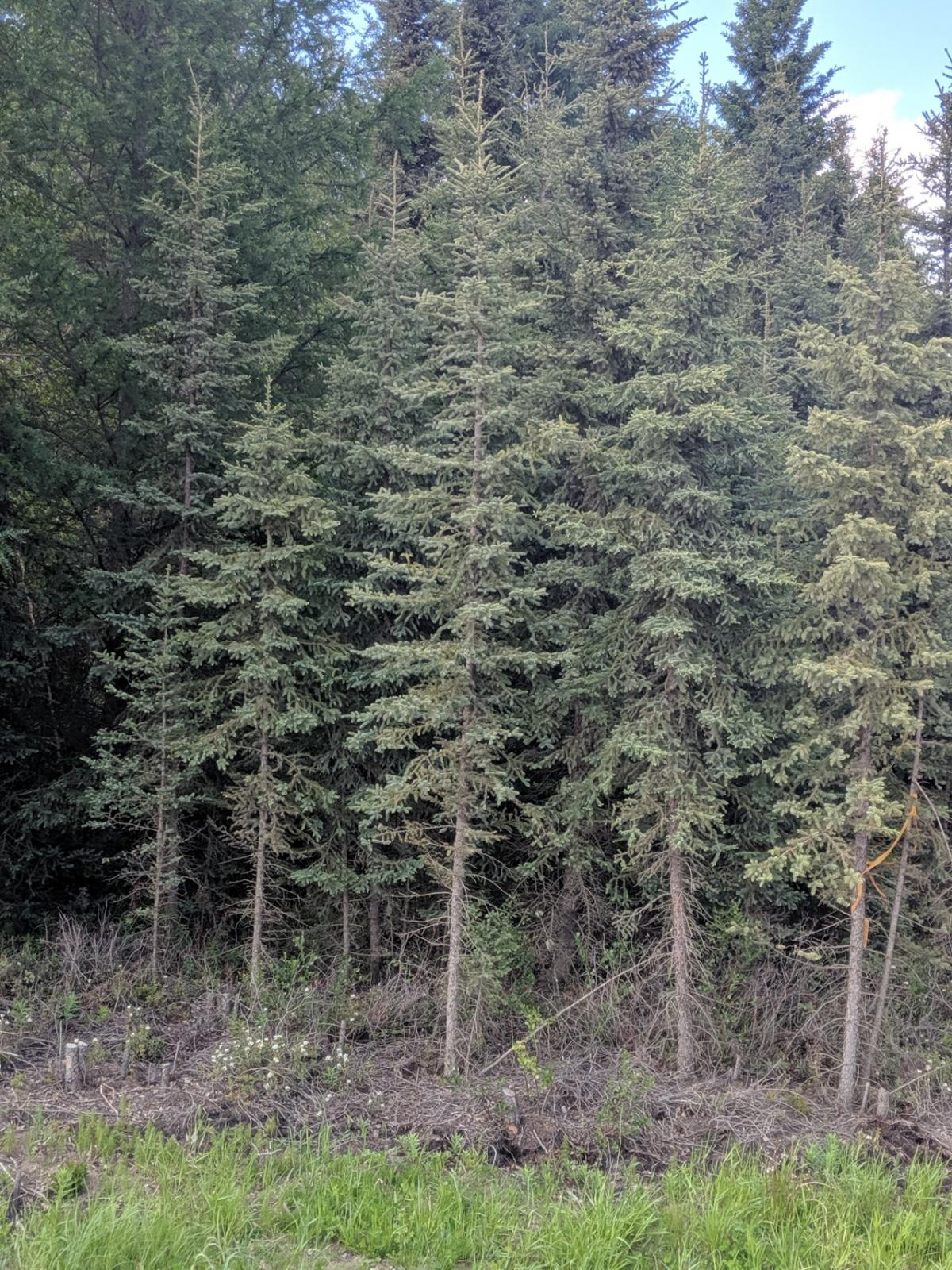
To harvest it, you must first find a younger spruce tree. Ideally, somewhere in the six to seven foot range as their roots are less tangled and easier to pull. A spruce tree that is growing on looser soil is the best as you can clean away dirt easier. This means, of course, that muskeg is best (even with the mosquitos).
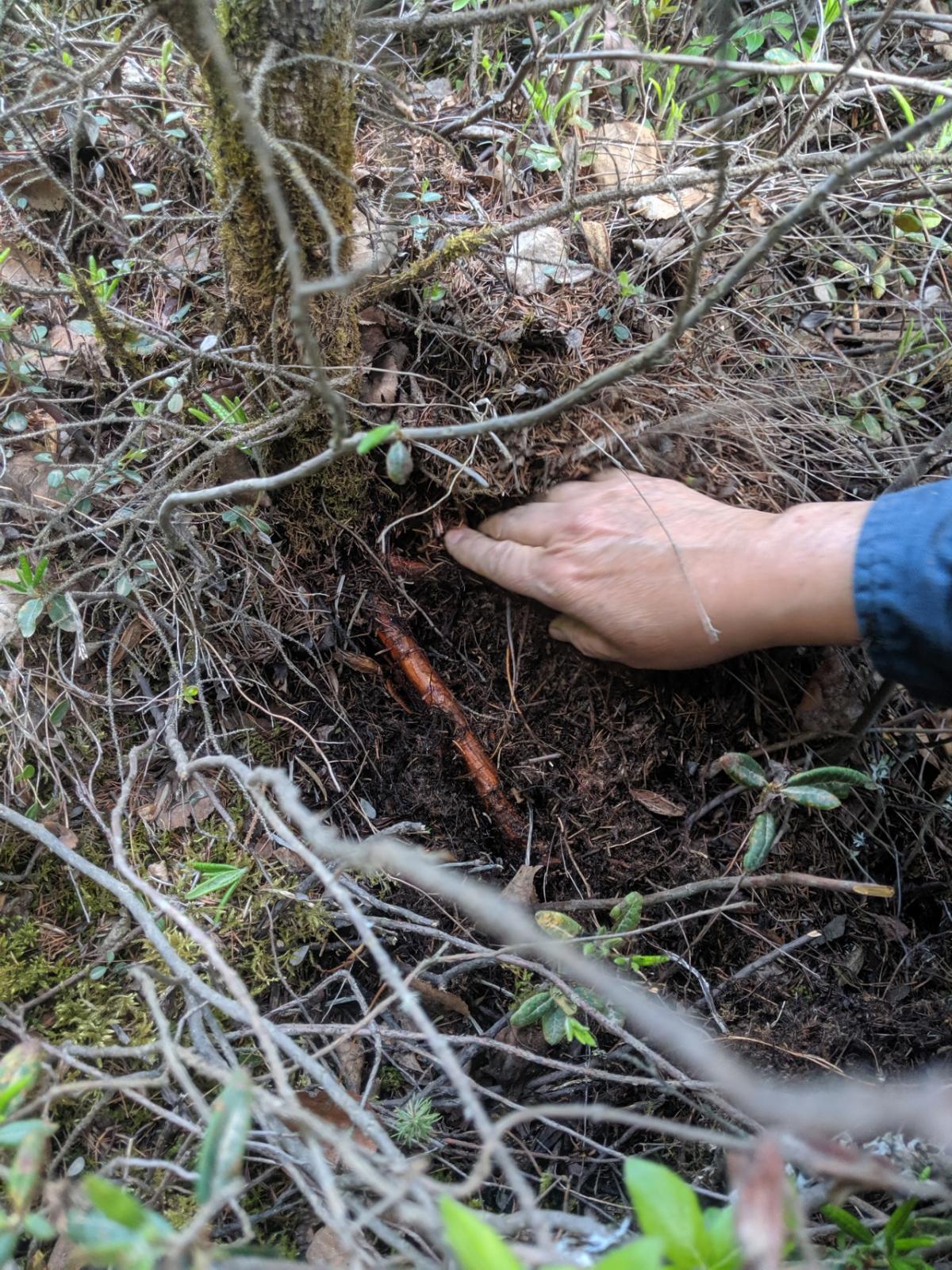
We dig around the tree to find the taproot which is thicker and will have many other roots branching off from it. From there we uncover and follow the root until we have all of it. Things can get messy and tangled pretty fast! Patience is essential so you don’t break the root off too soon while pulling.
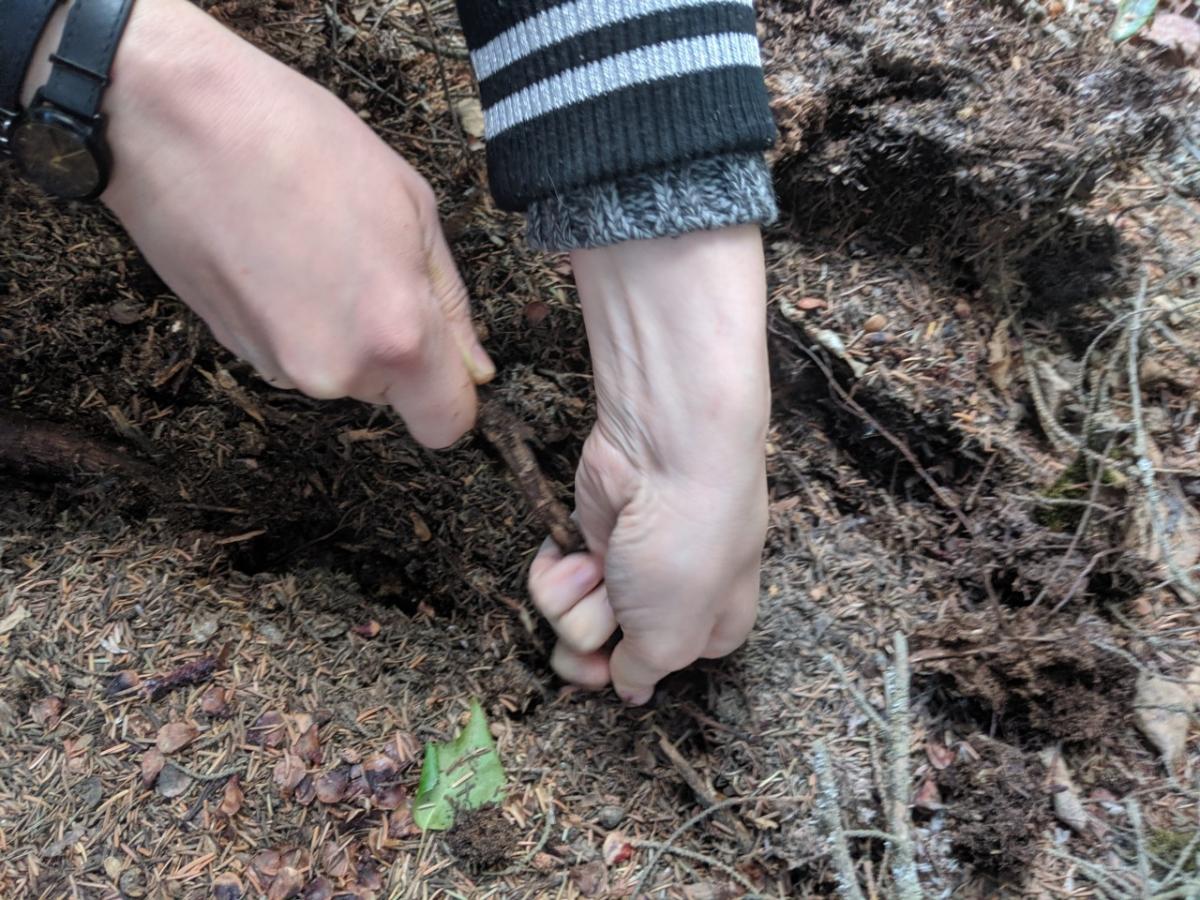
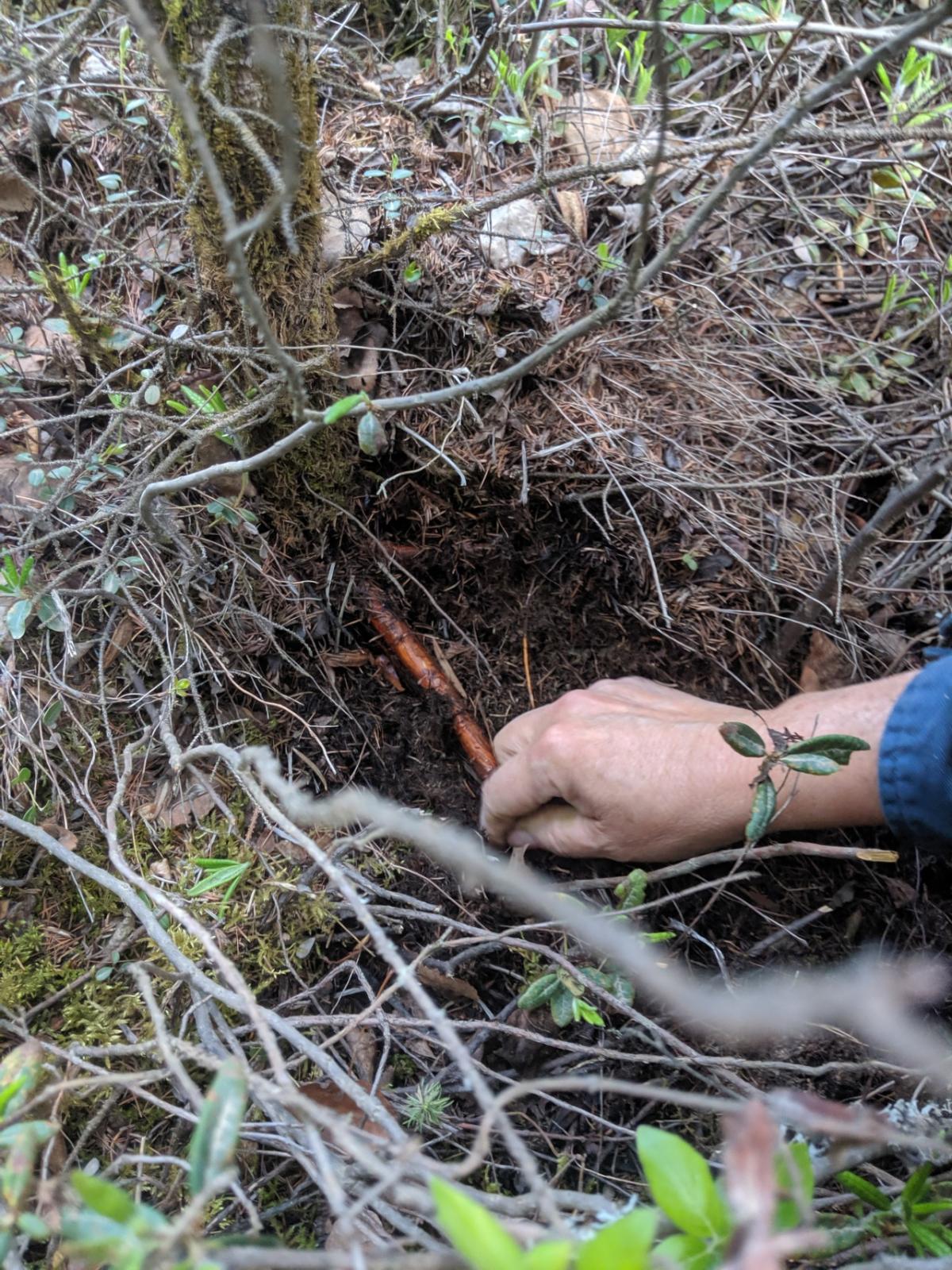
Spruce root is typically split multiple times and can be coloured using both natural and artificial dyes. After being soaked, peeled, and split the spruce root can be used to both stitch and decorate the basket.
Now that we’ve harvested the materials, it’s time to start constructing the basket. Click the link below to read part two to learn how I’m using these pieces to craft a basket, plus learn a bit about the art of Birch Bark Biting.